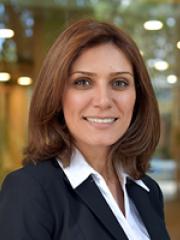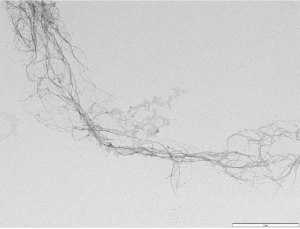21 Dr. Nasim Amiralian
Dr. Nasim Amiralian |
|
Time period: 2010-2021Subject: Bioengineering and Nanotechnology |
|
Biography:Dr. Nasim Amiralian is an Iranian scientist who continued her Ph.D. at the University of Queensland in 2010. With a background in natural materials, her Ph.D. project was about understanding the composition, extraction, and purification of the resin. She is now the Group Leader of Bio-inspired Materials research at the Australian Institute for Bioengineering and Nanotechnology. She has been engaged in communities such as AIBN Gender Equity, UQ Ally, UQ Wellness Ambassador, UQ HDR career development mentoring program, Early Career Researcher committee, Women in Technology (WiT) Life science committee, Royal Australian Chemical Institute, and conferences committee and plays a role as a Queensland Flying Scientist. In recognition of her contribution to the field of nanomaterials engineering and research excellence, she achieved a significant number of awards. Here are some of them:
|
|
Summary of their contributions:The primary contributions of this scientist and her team would be to the development of Australian indigenous knowledge known as “Traditional knowledge” or TK. “Australian Traditional knowledge exists in various contexts such as agricultural, scientific, technical, and medical” (Carroll, 2017). As an example, this team developed a commercial product known as nanofibers and resin extracted from Spinifex. This unique product has enriched the local community with the potential to significantly improve employment and economic development. In fact, scientists at the University of Queensland along with Dr. Nasim Alimardani worked with the community of Indjalandji-Dhidhanu People in Central Australia to harvest a particular type of spinifex, extracting nanofibers and resin. Carroll (2017) believes that the project’s team combined Indigenous knowledge about the application, preparation, structure, and properties of spinifex and its resin with controlled laboratory purification, modification, and testing to evaluate the potential for developing the resin and fibers as renewable materials. This commercial product has enriched the local community, with the potential to significantly improve employment and economic development.
|
|
Integration with the BC Secondary Science Curriculum:Their work is a successful example of indigenous traditional knowledge contribution to the world of science in general. In biological science, this knowledge is crucial for the application, preparation, structure, and properties of such products for renewable materials. In secondary science classes with a focus on biological studies, agricultural achievements, and substance engineering, educators can highlight the knowledge and work of such scientists, aboriginals, and their contribution to the world of science, society, and economy. The work of this team could be used as a case study to efficiently plan secondary science classes and to incorporate properly and respectfully the First People knowledge, their science-related perspectives, and experiences. Educators can implement the work of this scientist to plan learning activities for the secondary science subjects such as Environmental Science 11&12 and Life Science 11. Here are some of the related Curricular Competency driven from BC’s new curriculum that educators can promote among secondary students.
|
|
References:BC’s Curriculum. (n.d.). Science. https://curriculum.gov.bc.ca/curriculum/science Carroll, J. (2017, November 30). Indigenous knowledge: adding value to science and innovation.https://www.aph.gov.au/About_Parliament/Parliamentary_Departments/Parliamentary_Library/FlagPost/2017/November/Indigenous_Knowledge_and_Science University of Queensland. (n.d.). http://www.uq.edu.au/research/impact/stories/indigenous-opportunity-sprouts-from-desert-discovery/ University of Queensland. (n.d.). UQ Researchers. https://researchers.uq.edu.au/researcher/11106 |
|


